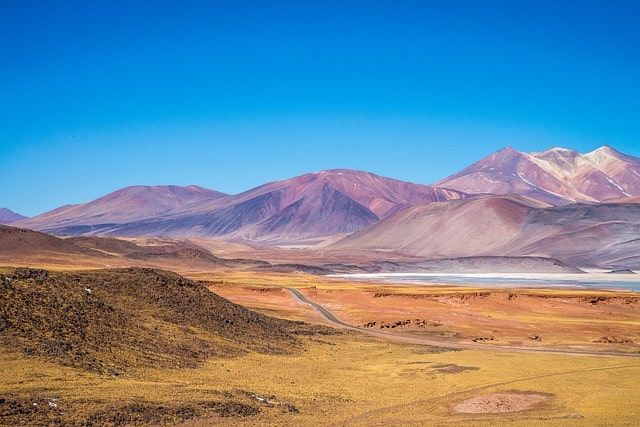What are arid zones and where are they found?
We understand a desert as an arid region - with little or no vegetation - the extreme harshness of whose climatic conditions make ordinary life very difficult, almost impossible.

In physical geography, a desert is defined as an 'arid region - with little or no vegetation - the extreme harshness of whose climatic conditions makes ordinary life very difficult, almost impossible'. Under this general idea, we tend to associate the term desert with extreme heat, sandy stretches of land, and the absence of life; but science divides desert areas into four types, namely: one, that which persists in the Earth's polar areas, covered with snow and ice, or else barren tundras.
The word tundra is from Russian, which in turn borrowed it from Finno-Ugric; it is related to the Suomi (or Finnish) tunturi, 'arctic hill', and to the Lappish tundar, 'hill', 'hill', 'hill', 'mound'. Tundra is a plain, level or slightly undulating, on which no trees occur, and is typical of arctic and subarctic regions; it marks the limits of arborescent vegetation (its neighbor is taiga, whose name is a Russian word of Turkic origin, related to the Teleut taiga, 'rocky, rocky terrain', and to the Turkic dag, 'mountain'); The soil is dirty, black and the subsoil is permanently frozen; on them proliferates a dense layer of mosses and lichens, of dwarf grasses and small shrubs, sometimes adorned with showy flowers.
The second type of desert is the one that, here on Earth, gives the appearance of our space neighbors, the Moon and Mars. It has not been named, but it is impressive the resemblance that its terrains have with those that the photographs of our natural satellite and our neighboring "red planet" show us.
In a third category we could classify the so-called edaphic (from the Greek édaphos, 'bottom', 'ground', 'soil', 'foundation'; perhaps related to hézesthai, 'settle', 'place', 'install', 'establish'), which means that the physical cause of their aridity lies in the nature of the materials of the soil surface, generally very porous - volcanic debris, for example - in which moisture seeps in very quickly, without giving time for plant life to germinate.
Finally, there are the arid, relatively warm regions that we usually think of when we speak of deserts. These owe their conditions to certain meteorological phenomena (minimum precipitation) because they are located in one of the two great tropical belts, or to other causes, since the physiographic and geologic variants are quite numerous; nor are the ages of these yermos (from the Greek éremos, 'desert', 'solitary', through the late Latin eremus, with the same meaning, and which also gives hermitage and hermit) uniform: some have maintained their original state, so far, for millions of years, while others have changed in an apparently unrecognizable way since the end of the Pleistocene period (the oldest of our Quaternary era), that is, during the last ten thousand years or so. For example, parts of the Sahara (Arabic for 'desert') and central Australia were glaciated in the Paleozoic era (between 570 and 225 million years ago).
These deserts, the most stable, probably the aridest, are also called tropical, because of their location: from the subtropical latitudes depart towards the low equatorial pressures the trade winds (a word of uncertain origin; the French say "au lis du vent", 'in the direction in which the wind blows', or else from the old French alis, 'united'); the subsidence of the air in the high pressures warms it and dries it and, as the trade winds blow towards warm regions, the drying is accentuated and the possibility of rain is almost annulled. In addition to the Sahara and central Australia, already mentioned, the Atacama and the Namib (in the coastal region of the Kalahari) are of this origin.
Atacama Desert
The Atacama was a culture of the oases of the Andean deserts (southern Peru, northern Chile, and northwestern Argentina); its last groups were assimilated by the Aymara and Spanish cultures; the language of these Indians was called cunza or lincan antai and it has been possible to trace a vocabulary of about eleven hundred words.
Namib is a nama voice (dialect of Hottentot) and means something like 'where there is nothing', a very accurate description of a desert.
Less rigorous are the steppes (the name comes to us, via French, from the Russian step), whose classic type extends along a Eurasian strip; although, if we speak of geobotany, the term steppe includes all plant communities in which subxerophytic and xerophytic herbaceous plants (which need little or very little humidity) predominate; from the Greek xerós, 'dry', plus phílein, 'to love', 'to crave', 'to desire', 'to need'), as in the U.S. states of Dakota, Nebraska, Texas and Kansas; south of the Gran Chaco and east of Argentina, in southern America; in sparse areas of North Africa, and even in certain parts of Europe, as in the Hungarian puszta (puszta is Hungarian and means 'desert', 'bare', 'barren'), where plants of the genus Artemisia proliferate; in some steppes, the highly brackish ones (with a high salinity index of the soil), the halophytes (word of the international scientific language, composed of the morphemes hal(o), 'salt', and phyt, 'plant'), 'avid of salt', of the genera Salicornia, Glaux and Suaeda, abound.




